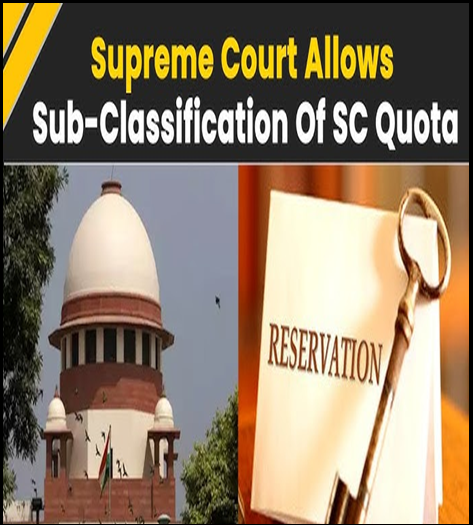SUPREME COURT REVISITS SUB-QUOTA RESERVATION POLICIES.
Why in the news?
The Supreme Court’s verdict on sub-quota reservations allows state-specific classifications within SC/ST categories, challenging previous homogeneity notions and sparking debates on caste-based reservation policies and representation.
source:slideshare
About SC Judgment on Sub-Quota:
- Supreme Court’s 2024 verdict in State of Punjab vs Davinder Singh allows sub-classification within SC/ST reservations.
- A seven-judge Constitution Bench rejected the homogeneity of SCs and STs.
- States can now provide different reservation percentages within Dalit communities.
Key Highlights of the Judgement
- Article 341(1): President specifies SCs for constitutional purposes.
- Article 341(2): Only Parliament can amend the SC list.
- Verdict: Inclusion in the Presidential list doesn’t create a uniform class.
- Legal Fiction: Presidential list is a legal construct, not a homogenous reality.
- Internal Differences: States can sub-classify SCs to address varying disadvantages.
- Articles 15(4) and 16(4): Empower states to make special provisions for SCs.
- E V Chinnaiah Case: Initially ruled against state sub-classification of SCs.
- Recent Verdict: States can identify different degrees of backwardness within SCs and provide reservations.
- Justice Gavai’s Emphasis: Equality of opportunity must consider varying social positions to avoid worsening inequality.
Dissenting Opinions and Historical Context:
- Justice Bela Trivedi highlighted historical social disabilities faced by depressed classes.
- The judgement overruled the 2005 E V Chinnainh case, which stated Dalits are a homogenous group.
- Concerns raised that the judgement might lead to tinkering with existing reservation policies.
About Article 341 of the Indian Constitution:
What is a Creamy Layer?
Associated Article:
|




